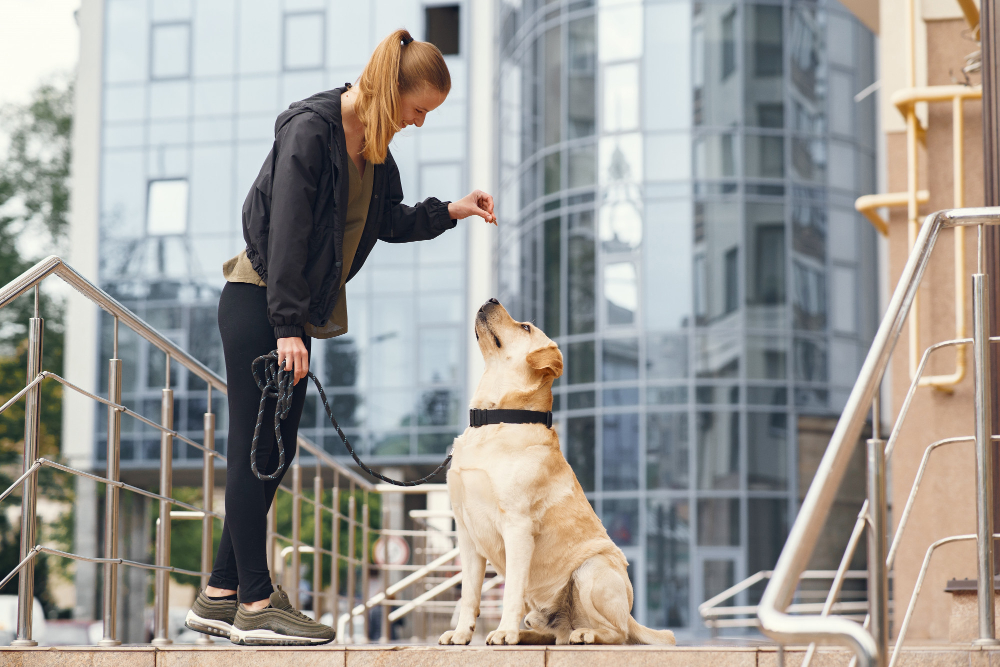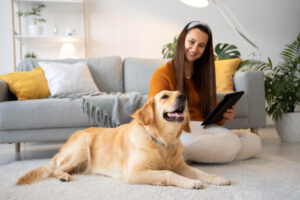While humans communicate through language, how do we communicate with dogs? Dogs communicate with humans through vision, hearing, touch, and smell.
- Visual Communication: Visual communication refers to the visual signals established between humans and dogs. These signals can be trained gestures, such as raising a hand to signal “sit,” allowing us to convey our needs to dogs. On the other hand, dogs convey their thoughts to us through body language, which requires owners to understand the meaning of dog body language. For example, when a dog lowers its front legs and raises its hind legs, forming a bow-like gesture, it means “invitation to play,” inviting the owner or other companions to play together. Cultivating dogs to actively pay attention to their owners and owners learning the body language of dogs are the foundations of visual communication.
- Auditory Communication: Auditory communication involves verbal commands. It’s important to keep commands short and avoid too much variation between commands to prevent confusion in dogs. Commands should be clear and expressed once, without continuous repetition. Commands should be given when the dog’s attention is on the owner. If the dog is not paying attention, using food or sound to attract the dog’s attention can be helpful.
- Olfactory Communication: We often say that our emotions can affect dogs. But how is this transmitted? Let’s talk about a professional term today: pheromones. Pheromones are volatile chemical substances secreted by animal bodies that can transmit messages between animals through olfaction, causing behavioral or physiological changes. In simple terms, pheromones serve as a means of exchanging messages. If the owner is very anxious, the dog may sense it through the owner’s scent and pheromones, and may feel that there is something to worry about. The calmer you are, the calmer your dog will be, and the happier you are, the happier your dog will be.
- Tactile Communication: Tactile communication often involves physical contact, such as light patting as a reward when a dog does well, or gentle tension through a leash as a hint.
By using these four communication methods and selecting the most appropriate and fastest communication method for the current environment, as well as combining multiple communication methods, we can achieve effective communication and ultimately establish a positive two-way communication.


